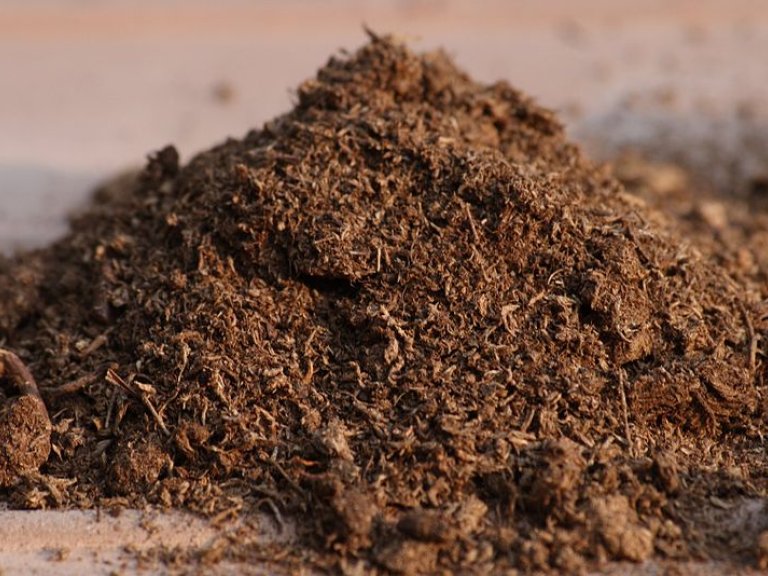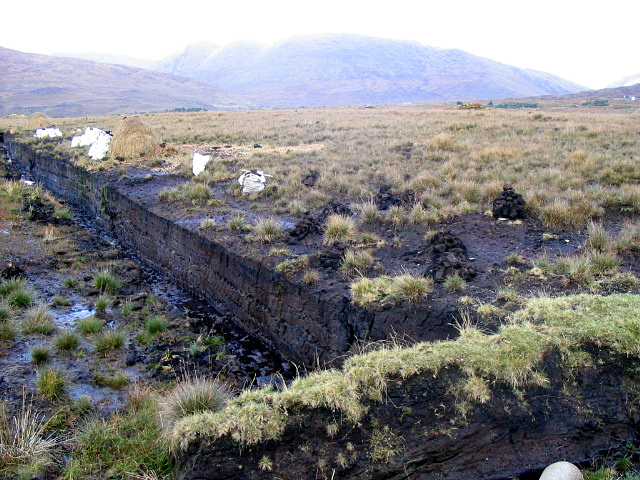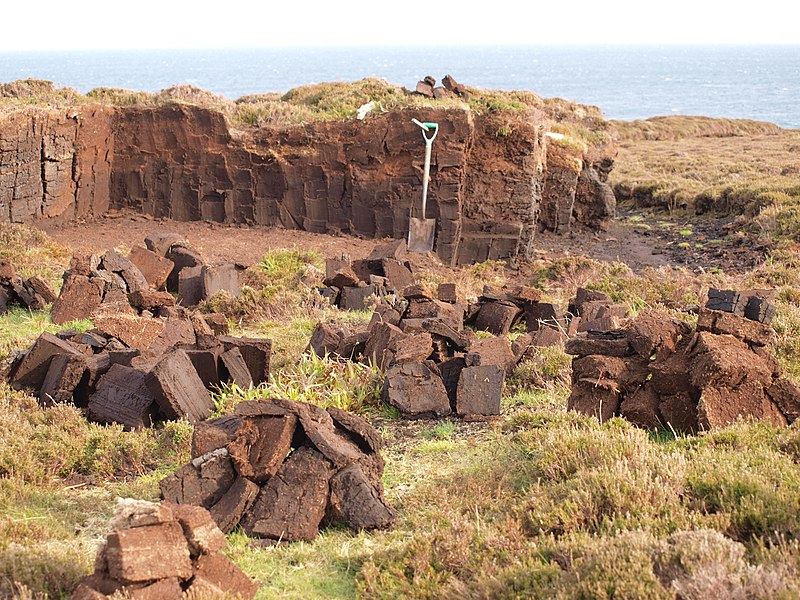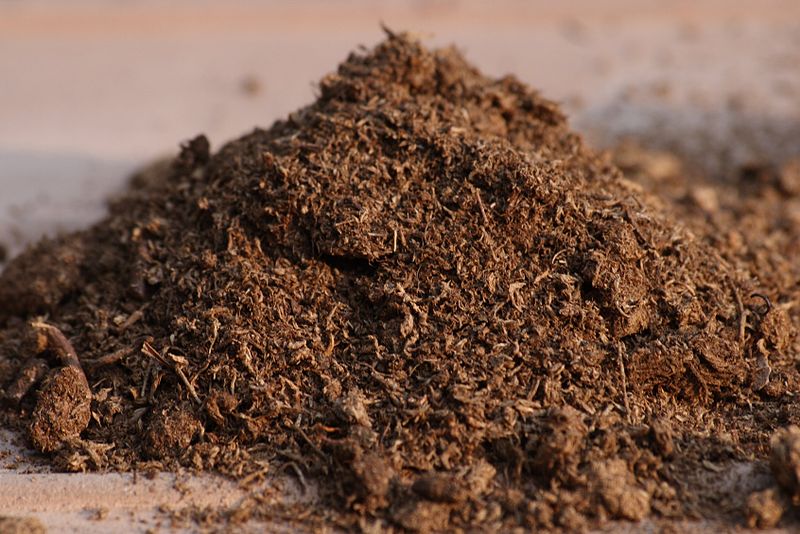Peat: Where is it in 2021?

Lately, various events made me think about peat. These events were found in news articles and newsletters (see below), and it is even related to my most recent publication in the Journal of Waste Management.
What is peat and how is it made?
Peat is concentrated organic matter. It is the first product in the carbonisation process, which describes the turnover of organic material (plants, animals...) into carbon. Leave it in the ground for another two million years and carbonisation will turn it into brown coal. Peat comprises plant material that cannot fully decay because of acidic or anaerobic conditions. In theory, it sounds like a very simple process. In reality, it is laced with nifty “features” that assist in the development of peat and wetlands. For example, sphagnum mosses produce relatively large amounts of tannins, which aids in the preservation of organic material because it prevents microbial decomposition. Recent research is highlighting the importance of microorganisms for peat land preservation. After all, many peat lands around the world defy climate change and can endure aerobic periods and unsaturated soil conditions (1).

Peat bog in Ireland.. Photo by user Amos via Wikimedia Commons.
Where can it be found and how much is there?
Peat lands formed mostly at the end of the last ice age when glaciers retreated. They are mostly found in northern Europe and North America, but there are also tropical peat lands in South America and even in New Zealand. Approximately 2.8% of the world is covered in peat, which accumulates to 4.2 million square kilometres. This equals 480 Gt of carbon, or 1,759 Gt of CO2 when released into the air. That is 1,759 TRILLION kg or 1,759,000,000,000,000 kg and has enormous ecological value, not just from a CO2 perspective. For comparison, global CO2 emissions for 2020 were around 32 Gt (2).

Traditional peat harvest. Photo by Derek Mayes via Wikimedia Commons and Geograph.
What is it used for traditionally? What is it used for in 2021?
I already mentioned that peat is the first product of the carbonisation process. Historically, peat was predominantly used for heating, just like coal. It has a similar heating value to brown coal, but other characteristics make it a less-desirable resource. Naturally, peat is wet and needs drying before it can be burned. Even when dry, it produces a lot of ash, and its fumes are corrosive and particularly bad for the environment. Still, peat was used widely for heating homes, energy production or to run steam locomotives. Today, peat mostly vanished from the global fuel economy. Well…. almost. Peat makes up about 5% of Finland’s energy production and is responsible for 14% of its greenhouse emission. Finland’s peat industry grew in 1973 when the country experienced somewhat of an energy crisis. Since then, many jobs are linked to peat and its substitution with more efficient energy sources is lagging. Today, there is still one very good use for burning peat and that is for producing whisky. More precisely, for roasting the malt and adding smoky flavours. Other key industries are found in agriculture and medicine. In agri- and horticulture, peat is used to improve soils and potting mixes. Peat itself does not provide a significant amount of nutrients but is used for other aspects. Due to its high carbon concentration, peat holds a lot of water. It also has a very high cation exchange capacity. Basically, peat is like a sponge that can hold on to nutrients if they are provided through other means, such as manures or mineral fertiliser. Peat is acidic, which is good for plants like blueberries or camellias. In smaller concentrations, peat shifts plant substrates to a desirable pH of 5.5 to 7. All these properties make peat a very sought-after material for plant production. In Europe, 29 million m3 are blended into plant substrates each year. Obviously, that presents some issues when we think about peat and carbon storage. Peat has a bulk density of 0.2 g cm-3, or 200 kg m-3. As such, our 29 million m3 of annual peat use for horticultural substrates weighs 5.8 million tonnes and contains about 2 million tonnes of organic carbon (estimated 35% SOC content) or 7.3 million tonnes of CO2, when released into the atmosphere. After adding peat into plant substrates, the carbon is not protected anymore by anaerobic conditions or microbial products. It can be assumed that a large percentage of this carbon will eventually be released into the atmosphere as CO2. This news article mentions CO2 emissions of 400,000 t per year.
Fireplace, fueled by dried peat brickets. Photo by 汲平 via Wikimedia Commons.
Sustainability of potting mixes
At this stage, we must admit that there is some debate whether peat is considered a renewable material. Of course, we do not classify coal or oil as renewable, because its development spans many lifetimes. With peat, the time it takes to produce can be drastically shortened, giving it a renewable touch. While some peat bogs are actively being harvested, others are developing at the same time. Remember when I mentioned how peat land uses all sorts of tricks to survive and grow? Many companies which are harvesting peat commit themselves to sustainability goals. Restoration techniques can be as simple as collecting moss layers from a donor site and transplanting it to a depleted site. There has also been research into using non-decomposed Sphagnum biomass as a peat substitute. And this can be grown artificially and harvested yearly. Similarly, a whole range of peat alternatives has been proposed. These include organic waste products from other agricultural industries, such as coffee husks, coco fibres, wood chips. There is still one problem: Their properties do not always match what is required and they are subject to natural variability. Take for example growing vegetables under 20 ha of greenhouse. In this scenario you want to be as consistent as possible. Variable substrate qualities can become a big issue. Still, there is a solution to every problem and “alternative” potting mixes can be found in almost every gardening store. At least for home gardeners, peat-free substrates should be the norm, rendering discussions about the sustainability of peat obsolete. Peat free potting mix was also recently mentioned in a newsletter by Sustainablebrands, which was one motivating factor for me to write about peat. Another motivating factor was a recent political discussion in Germany. Hold on tight because this turns into a little rant.

Schultz brand Sphagnum peat moss, processed for use as soil amendment. Photo by Ragesoss via Wikimedia Commons.
Germany’s eco-washing
Around the world, Germany seems to have an image of being environmentally friendly. This might be connected with "German engineering" or its “pedantic” recycling system. In reality, Germany ranked only place 19 in the recent Climate Change Performance Index, behind countries such as Lithuania (15) or India (10). I would like to present one example, why Germany might not be as environmentally friendly as commonly perceived. Around 5% of Germany used to be covered in wetlands, which is about 1.5 million hectares or 15,000 square km. Today, 95% of these wetlands have been artificially dried out to be used as agricultural or residential areas. As mentioned before, wetlands are a delicate system with significant ecological value. They are home to many rare animal and plant species. Furthermore, wetlands clean natural waterways and protect the land from erosion. And, of course, they store massive amounts of carbon. When wetlands dry out (naturally or artificially), the carbon is not released instantaneously but gradually over many years. Re-wetting and restoring dried wetlands can therefore reduce the damage and prevent further carbon to be released as CO2. For Germany, we are talking about 5% of its total CO2 emission being emitted from destroyed wetlands.
Hence, a recent bill was discussed to restore dried wetlands, which divided the political landscape. The one side wanted to restore all previous wetlands, whereas the other side wanted to restore only dried wetlands that are not used agriculturally. The reason for the latter being that the densely populated German landscape cannot afford to lose more agricultural areas. Of course, the agricultural industry has a stronger lobby than wetlands. In the end, no agreements were made and everything is back at the status quo. This development is even spicier once you know more about Germany’s subsidy of regenerative electricity. Germany offers massive financial stimulus for the biogas sector. One major feedstock for biogas plants is maize, which is a crop that can even further deplete soil carbon. Currently, 1 million ha of maize are grown to be used in biogas plants, rather than for human or animal consumption. I have no data about how much of these areas used to be wetlands, but either way, it makes little sense for two main reasons. First, important carbon storages (wetlands) are destroyed, predominantly so that they can be used for agriculture. Second, soils are even further destroyed (aka carbon depleted) for the production of "green" biogas (3, 4). This seems like ecological exploitation with some extra steps and it is all done for the sake of "green" energy production.
.jpg)
Biogas plant with two fermenters. Photo by Threecharlie via Wikimedia Commons.
Conclusion
I admit, I went sideways. But there is a lot more to the topic of Germany’s quest for sustainability and environmental protection through subsidised agriculture. The reality often looks quite different, because nature is a connected system, where fixing one screw can lead to bigger issues somewhere else.
Globally, massive amounts of peat are still actively harvested. In some minor cases due to energy production, but more often as soil supplementation. However, peat can theoretically be harvested sustainably. Even better, it can be substituted by various other organic substrates. At least for home gardeners, these substitutes should be equally suited than peat. If you find yourself looking for potting mix, buy peat-free products and reflect on the importance of wetlands and peat lands. Although they are mostly anaerobic, saturated, and smelly, they are something like Earth’s liver. They detox our environment and store excessive amounts of CO2 as inert carbon.